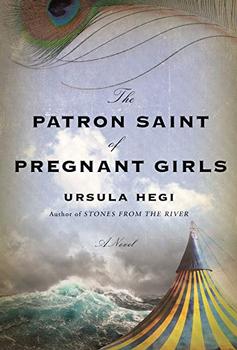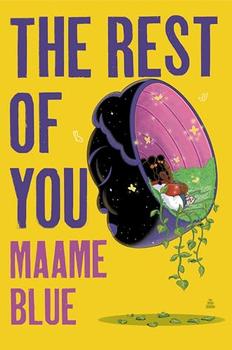Page 1 of 2
There are currently 14 member reviews
for The Patron Saint of Pregnant Girls
-
Mary Anne R. (Towson, MD)
The Patron Saint of Pregnant Girls
This was a difficult novel for me to get into at first. The beginning scenes enveloped me in sadness. Maybe because of the pandemic I had trouble reading further but I am glad I did. Once the characters,so many characters, appeared on the scene I wanted to know them and their story.
The author has created a society of people where there is loss, heartache, deceit, abandonment and love. It is love that weaves its delight in the story. She has also created a place where non-human elements such as the Nordsee, the Zircus, the home for the girls are injected with life.
The author's characters have such depth.even the ones met a few times. I liked the author's writing style. Often it is beautifully poetic.
I think this is a good book for a book club discussion. There are many emotions involved in the novel that it would be interesting to get the opinion of others.
-
Patricia A. (Estero, FL)
A story of grief and love - The Patron Saint of Pregnant Girls
It's been a while since I have read one of Ursula Hegi's novels, but in reading "The Patron Saint of Girls" I was quickly reminded of why I like her books so much. Hegi has again written an original and moving novel with a huge cast of fantastic characters that weave their way into your p head. I loved this book and the people in it, they are lovable and tragic and very human.
The nuns take in young pregnant girls, care for them, teach them and their children or arrange for the adoption of their babies. Tillie's baby is torn from her arms although she is desperate to keep her. However, poor Tillie is only eleven years old and has nowhere to go as her parents will not take her back. She is too young to be responsible for a child as she is a child herself.
The story is set in the land of dikes and windmills in the 19th century where the land floods frequently. This is primarily the story of Lotte and Kalle and of their tremendous loss. Three of their four children are pulled into the sea and drown in a hundred-year wave.
The year is 1878, a glorious summer day when the circus (zirkus) is in town, an event looked forward to all year. We meet the members of the circus, considered misfits or outcasts by some, but Hegi draws them with tremendous respect and tenderness. Each of these people are worth knowing and enriches the story of Lotte, Kalle, and Tillie.
Sabine, who sews costumes and the beekeeper who loves her and her and her daughter, Heike, who will always have the mind of a child but has the gift of playing the cello, even the jugglers and acrobats all enrich the story.
Part of the book goes back to 1842-45 when the nuns establish the school and home for the young unwed girls. But it is the year of Lotte's and Kalle's denial and unimaginable grief and their creation of an alternate reality the builds up a terror of what might lie ahead that grips the reader with fear.
-
Linda S. (Tucker, GA)
The ties that bind us
I really enjoyed The Patron Saint of Pregnant Girls by Ursula Hegi! At first I was a bit put off because it is a bit hard to get into, but once in I was hooked. There is a lot of grief here, but as in life, it is the grief that creates meaning and growth. And boy do the three main characters grow! Hegi's writing style in this novel is somewhat different than Stones from the River as she writes in simple thoughts or blurbs, leaving it to the reader to think and connect the dots, so if you like everything explained to you, you will not care for this book. On the other hand, if you are a careful reader into a beautiful story of intergenerational women and their bonds, you too will enjoy this story.
-
Janice A. (Chippewa Falls, WI)
The Patron Saint of Pregnant Girls
The characters in this book are complex and their backgrounds are slowly revealed. As I discovered more about each character, I developed a further understanding of the loss the character experienced, their reaction to this loss, and the strength they found. At times, I found the number and complexity of the characters to be confusing. Like me, other readers may initially struggle with the writing style. However, if you can adapt to this style you will discover an intriguing and interesting story.
-
Juli B. (Prosper, TX)
A story to savor in a quiet corner.
The storyline of this highly anticipated novel by respected writer Ursula Hegi is filled with mystical situations, poetic language, rich characterizations, and heartbreaking details about family relationships presenting readers with a truly emotional experience. The exquisite writing style is best savored in a quiet reading corner to appreciate the complex emotions of grief, unconditional love, and parenting that are unveiled slowly throughout a series of flashbacks as well as real-time dramatic moments. Losses are profound, but treated with beautifully detailed language that places words where only emotions generally live. Overall the storyline is often confusing. The timeline weaves a fairly complicated plot swirling around multiple characters and a sometimes choppy paragraph alignment moving too quickly between situations, but Lotte's belief in miracles will guide readers forward with hope that happiness will win over her crushing self-imposed guilt in the end.
-
Pamela F. (Sun City West, AZ)
Well done!
I have to agree with some of the other readers of this book. I, too, found it a little difficult to get into. But please stick with this one. So many interesting characters...you just want to dive into their lives. A good read indeed!
-
Sherry K. (Lufkin, TX)
The Patron Saint of Pregnant Girls
In 1878 the remote German village of Nordstrand lies amid a thick yellow growth of rapeseed and the Nordsee with its grays and blues.
This story is about people who love and whose lives are laced together, who respect, no, venerate their elders. 'The old people' are revered for their knowledge and experience . An annual festival festival is held honoring the eldest person in the village -- --- a coveted honor. It is acknowledged however that many of their stories may have been picked up through gossip. The men fish, the women tend their houses, cook, clean and care for their children. They attend mass at the stately St. Margaret's church where the nuns care for pregnant Girls, birth their babies, and find homes for them. The nuns provide a broad education for the Girls… physics, geography, theater, dancing, art. A circus comes to town once a year, thrilling everyone. Life in this tranquil village is anything but idyllic or simple. Unbelievably, a tragedy occurs in the wake of a tremendous wave, a surge that only occurs every 100 years. Three children are lost to the wave. The entire village is devastated. The story of how they were affected, both immediately and for the rest of their lives is exquisitely told by the writer. Lives become intertwined throughout the devastation and sorrow. It is a story of women, mothers, wives, girls, nuns...young and old. I loved this book, the characters and the realism. I had a problem, however with so many Germanic words and phrases which interfered with my thought process like hitting a bump in the road while enjoying a beautiful bucolic country ride.




